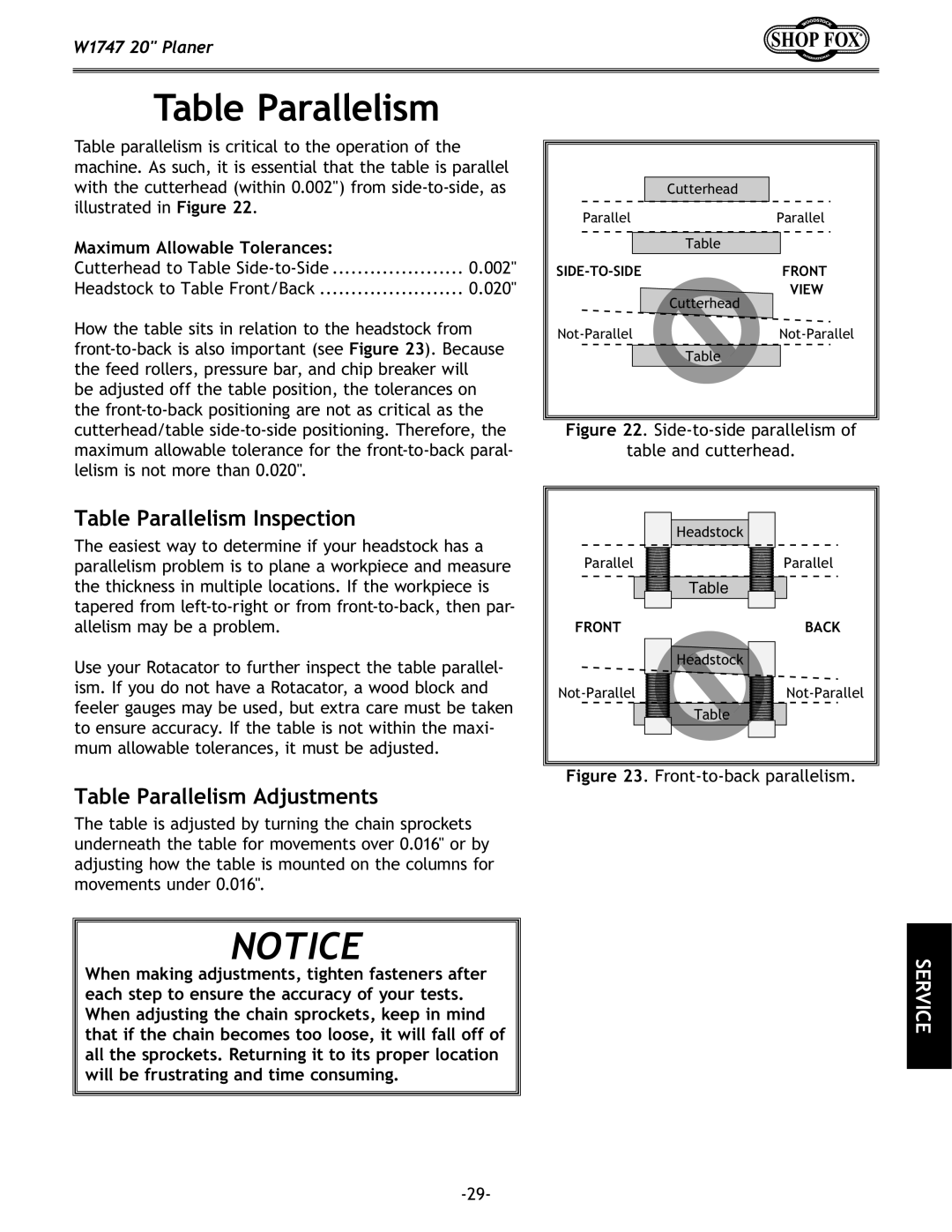
W1747 20" Planer
Table Parallelism
Table parallelism is critical to the operation of the machine. As such, it is essential that the table is parallel with the cutterhead (within 0.002") from
Maximum Allowable Tolerances: | 0.002" |
Cutterhead to Table | |
Headstock to Table Front/Back | 0.020" |
How the table sits in relation to the headstock from
be adjusted off the table position, the tolerances on the
Table Parallelism Inspection
The easiest way to determine if your headstock has a parallelism problem is to plane a workpiece and measure the thickness in multiple locations. If the workpiece is tapered from
Use your Rotacator to further inspect the table parallel- ism. If you do not have a Rotacator, a wood block and feeler gauges may be used, but extra care must be taken to ensure accuracy. If the table is not within the maxi- mum allowable tolerances, it must be adjusted.
Table Parallelism Adjustments
The table is adjusted by turning the chain sprockets underneath the table for movements over 0.016" or by adjusting how the table is mounted on the columns for movements under 0.016".
NOTICE
When making adjustments, tighten fasteners after each step to ensure the accuracy of your tests. When adjusting the chain sprockets, keep in mind that if the chain becomes too loose, it will fall off of all the sprockets. Returning it to its proper location will be frustrating and time consuming.
����������
����������������
�����
������������������
����
����������
������������ ![]() ������������
������������
�����![]()
Figure 22. Side-to-side parallelism of
table and cutterhead.
| ��������� |
�������� | �������� |
| ����� |
����� | ���� |
| ��������� |
������������ | ������������ |
| ����� |
